 As BLM has been reaching back into the bowels of the Wild Free-Roaming Horse & Burro Act (WFRHBA) to guide their management strategies, which now include killing “excess” wild horses and burros or just sterilizing the ones left, a review of the Act and its legal mandates seems in order before BLM starts pulling triggers.
As BLM has been reaching back into the bowels of the Wild Free-Roaming Horse & Burro Act (WFRHBA) to guide their management strategies, which now include killing “excess” wild horses and burros or just sterilizing the ones left, a review of the Act and its legal mandates seems in order before BLM starts pulling triggers.Did you know Congress defined “range” as:
“….the amount of land necessary to sustain an existing herd or herds of wild free-roaming horses and burros, which does not exceed their known territorial limits, and which is devoted principally but not exclusively to their welfare in keeping with the multiple-use concept for public lands;”
Did you know that BLM is only authorized to remove wild horses and burros from the range? There is no other definition provided in the Act but “range” for wild horse and burro habitat that BLM is allowed to remove them from.
Many who are interested in wild horse and burro issues have long contended the original intent of the Act was to apply this definition to wild horse and burro habitat across the West – to be devoted principally to wild horses and burros.
What makes this even more interesting is, the Nevada Commission for the Preservation of Wild Horses formally requested an Opinion from Nevada’s Attorney General (AG) as to what the Commission’s jurisdiction was regarding wild horse and burro habitat and population. Apparently, the controlling Sage Brush Rebels in the Nevada Legislation had craftily slipped in Nevada law that the Commissions jurisdiction only covered “sanctuaries” – except there were no sanctuaries in Nevada at the time.
The Nevada AG came back with an Opinion on June 1, 1998 that defined “sanctuaries” (the ones that are suppose to be principally devoted to wild horse and burro preservation) as synonymous with Herd Management Areas. The AG also went on to define “sanctuary” in relation to the preservation of wild horses and burros as “absurd” to the “plain meaning” as it was the Commissions duties to have significant power to protect ALL wild horses and burros and their habitat, not just “sanctuaries”.
The AG also contended that only using the definition of “sanctuary” in relation to wild horse and burro populations and habitat preservation was not only “absurd”, it would render the intent of many other statutes established from their preservation - meaningless.
And isn’t that exactly what has happened?
The Secretary of the Interior has re-interpreted law and re-written policy to such a degree that it has become absurd - rendering the preservation of wild horses and burros and protection of their habitat in relation to the thriving natural ecological balance - meaningless. (Notice how the word “natural” has now been pulled from every DOI publication on the subject?)
BLM managers have long contended it was an oversight of Congress for failing to define “who gets what” in relation to the public lands forage pie while many wild horse and burro advocates maintain that after the Act was passed, the livestock industry fired up their lobbying machine to gut wild horse and burro protection and return that pie to them. Never mind that grazing on public lands is a privilege, not a right.
Did you know in the Public Range Improvement Act, passed after the WFRHBA, Congress defined livestock use areas as “rangelands” or “public rangelands”, not range? Anyone else find it odd that Congress established two separate definitions for land used by livestock and wild horses and burros?
Did you know the 1971 WFRHBA never mentions having to consult, confer or consider livestock grazing uses specifically – only wildlife needs.
Furthermore, the Secretary, aka BLM, is only allowed to evaluate and define “excess” wild horses and burros in relation to the “thriving natural ecological balance and multiple-use relationship in that area”. Section 1332 (2).
In both definitions - range and what constitutes “excess animals” – multiple use was listed as a secondary consideration and livestock needs were never defined as a dominate use at all.
Yet somehow, it has all become turned around, hasn’t it?
What could possibly be “natural” about an Asian exotic species such as the 8 million cattle that are reported to be grazing public lands? Or the hundreds of thousands of miles of fencing erected for their control? Or the 1.6 million natural predators wildlife “services” killed in 2006? (Latest figures state $100 million a year spent in “managing” this thriving natural ecological balance) (1)
BLM is maintaining that to return the 33k now in holding along with the 33k they claim is still roaming free would cause ecological “havoc”.
At the turn of the century, an estimated 2-3 million wild horses roamed the West. Today, it is estimated that 8 million cattle are authorized on 160 million acres of just BLM managed land (and that doesn’t include the sheep).
Despite this, livestock are given the lions share of the available forage in wild horse and burro habitat while the wild horses and burros themselves are doled out a pitiful 10% or less (usually much less!) - even though their allowed habitat is approximately 5 times smaller.
So BLMs stance is 66k wild horses and burros are more ecologically damaging than 8 million cattle and who knows how many sheep. Really? More of BLMs “funny math” I guess.
So how about Congress finally clarifying “who gets what” in wild horse and burro habitat?
If BLM wants to revisit their legal rights to continue herd and habitat decimation, how about Congress revisiting it too and clearly re-establish the Wild Free-Roaming Horse and Burro Acts original intent – that their habitat is to be devoted principally but not exclusively for their protection and preservation. After all, Americans now have a plethora of public lands devoted to “exclusive use” as this has become all the rage in federal management strategies.
With all Herd Management Areas defined as “ranges” to be devoted principally to their preservation and protection again, livestock authorizations could be slashed to merely 40% of what they are currently getting. Still fair, right? After all, livestock would still have 125 million more acres more than wild horses and burros on just BLM managed lands AND they would still get a fair cut of the forage to boot!
Let’s use the Jackson Mountain Herd Management Area (HMA) for an example, home of the 185 dead wild horses at Palomino Valley last fall.
There are six authorized grazing allotments that overlap the Jackson Mountain HMA, though to be fair, not all of them are in the Jackson Mt HMA 100%: Bottle Creek, Deer Creek, Desert Valley, Happy Creek, Jackson Mountain and Wilder Quinn and BLM has authorized 32,744 Animal Unit Months of forage exclusively for livestock consumption in these allotments.
Conversely, the Jackson Mountain wild horses have been issued 2,604 Animal Unit Months, or 7% of the available forage while livestock get 93%. To reverse this trend, a general approximation would go something like this.
If livestock consumption was cut to 40%, they would still get 14,136 AUMs while wild horses would be now be allowed 21,204 AUMs.
Currently, BLM has determined that anything more than 217 wild horses in the Jackson Mountain HMA is “excessive” and must be removed to preserve, not the thriving natural ecological balance but the “multiple-use relationship” (a relationship that resembles something more out of a S&M publication than an actual relationship).
However, with the new forage allocations devoting the HMA principally but not exclusively for wild horse and burro preservation, 1,767 wild horses could now roam their own home ranges without any change to authorized use at all. Suddenly, a home besides slaughterhouses and long-term holding facilities has been found for 1,550 wild horses. Imagine that….
And imagine if Congress did that for every wild horse and burro Herd Management Area still standing – how many could live again “for free”?
Click Here to read an Extracted Version of the Nevada Attorney General's Opinion on Wild Horse and Burro definitions.
Livestock Allotment Authorized Use taken from BLMs Public Rangeland Statistics Reports available at: http://www.blm.gov/landandresourcesreports/rptapp/menu.cfm?appCd=6
(1) Predator Statistics taken from Wild Earth Guardians available at: http://www.wildearthguardians.org/

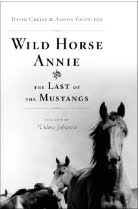








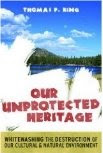



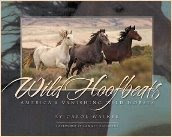




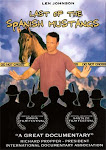





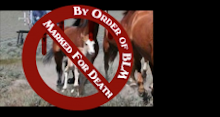
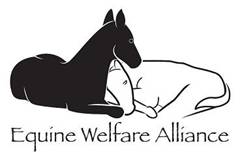
No comments:
Post a Comment